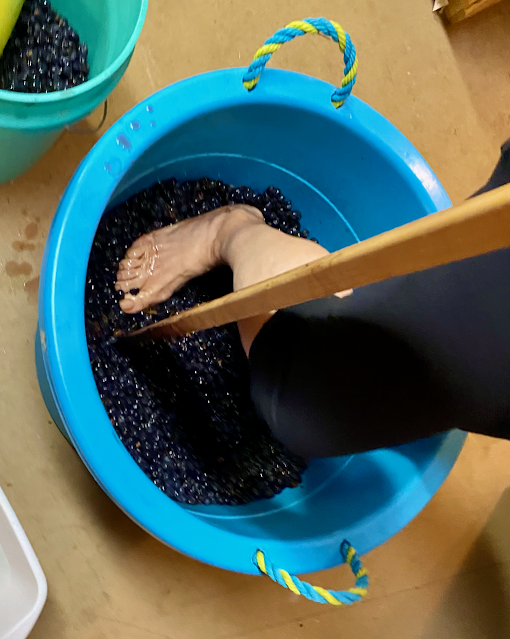You may not know that I stopped drinking regularly. This is because of the risk of getting Alzheimer's Disease because I have a bad Alzheimer's gene. My goal is to have only a few alcoholic drinks per year. According to the research, alcohol really increases the risk of Alzheimer's.
I have a basement full of fermenting wine, about 200 gallons. I decided that I want to de-alcoholize it and drink it myself. I could not bear with pouring it down the drain.
I built a vacuum-distillation apparatus. It can strip off the alcohol from two bottles of wine in about 2 hours and thirty minutes. I have been saving the brandy even though I can't drink it. I can describe the vacuum-distillation apparatus later.
Today, I de-alcoholized the 2021 Cabernet Sauvignon. The machine can attain about 70 torr or 50MPa. Under those conditions alcohol boils at about 28C and water at about 40C. I trap the alcohol in an ice-trap.
One can watch the process by watching the boiling temperature. It begins about 28C and goes up to 40C as the alcohol boils off. At the end, I add back a cup of water. I don't can if I concentrate the wine a little, but not too much or the acidity is affected.
I make some additive additions at the end.
Dealcoholized Wine Recipe
1500 g de-alcoholized Cab Sauvignon
0.05 g sulfite preservative (0.03 would have been ok too)
1.4 g sucralose (to dampen the bitterness)
2 shakes (⅓ ml?) of Tabasco sauce (to mimic to "burning" sensation of alcohol)
1 ml artificial grape flavor (LorAnn Grape SS Flavor)
Why do I add the artificial grape flavor? Because most of the natural grape flavor boils off with the brandy, or actually with the methanol fraction that gets thrown away. The deacoholized wine is strangely odor-free and a bit of grape candy flavor really helps.

















